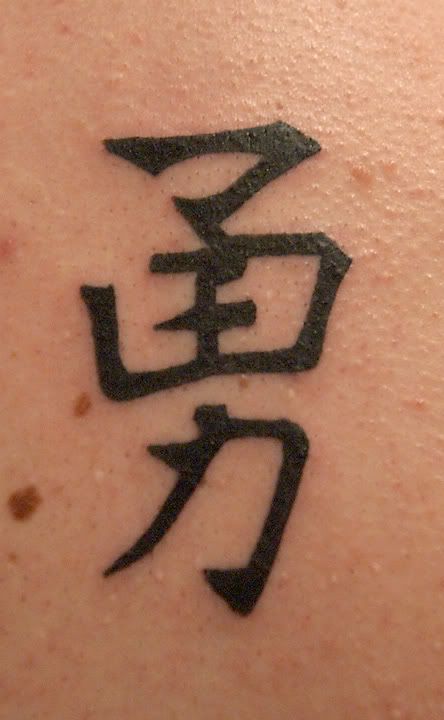



The most used Japanese tattoo motives with an explanation of their meanings.
* Hannya Masks
* Kiyo Hime
* Kannon
* Fudô Myôô
* Dragons
* Kois
* Tamatori Hime
* Tigers
* Suikoden Warriors
* Snakes
Hannya Masks
Against the wide-spread opinion Hannya Masks do not have anything to do with the devil or Satan. There is a concept of a hell in the Japanese Buddhism, but Hannyas are terrestrial monsters. Confused human feelings like passion, jealousy or hate can transform women into these dreadful monsters. In the classic Nô-Theatre of Japan, where the as drafts often used Hannya masks descended from, stories of such female demons are told, who can only be released of their inhuman shape over the way to Buddha.
Kiyo Hime
The best known story of a Hannya demon is the one from Kiyo Hime. Her father owned a harborage in which a monk stopped each year. Over the years Kiyo Hime developed a deep love to the monk but her feelings could not be returned by him. One night Kiyo Hime confessed her love to him and it came to a controversy between the two of them and in which process Kiyo Hime enraged and the monk had to escape. He found shelter in a close monastery and hid himself under an enormous bell. In the meantime, in the intoxication of its hate love, Kiyo Hime had transformed into a demon with the body of a snake and a Hannya head. It sought out the monks hiding place and melted the bell with its fire breath, thereby causing the object of its longing a painful death.
Kannon
Kannon is a Bodhisattva of the Mahayana Buddhism. The task of the Bodhisattva is it to support humans on their way to illumination. There are Bodhisattva with several different tasks. Kannon is the Bodhisattva of sympathy and pity. In Japan Kannon is represented by a woman, usually riding a dragon. while in India, the country of origin of Buddhism, Kannon is represented by a male.
Fudô Myôô
In the buddhist hierarchy the Môôs stand under the Bodhisattva. They are also protectors of the Buddhism but in the contrary to the gentle Bodhisattva rather martial due to their armament. The most popular Myôô as a tattoo motive is Fudô Myôô, the imperturbable one. He is also considered the guard of hell and a knowledge king and is always displayed with a rope, with which he binds evil, and a sword, with which he fights Buddhism enemies.
Dragons
The best known japanese motive is the dragon, for sure. In Japan it is regarded as a luck bringing animal. This may be justified due to the fact that the japanese dragon is a water symbol. He lives either in the clouds, from where he climbs down during thunderstorms, or also in rivers and lakes. It stands for an element which was of an enormous importance for the rice cultivation rice in Japan. Therefore dragons are highly respected and admired in Japan and weren't fought like in european tales for instance.
Kois
In Japan, a koi jumping or swimming up a waterfall is a symbol of strength, the ability to assert oneself and success. As a phallic symbol it stands for male strength and power.
Tamatori Hime
The legend tells that Tamatori Hime once stole the king of the underwater world who was an enormous dragon his most valuable possession, a precious bead. In order to swim faster on her escape, Tamatori Hime cut herself and hid the bead in her own body. Although she found her way ashore, she died on her injuries becoming a victim of her own greed.
Tigers
Although there were never any tigers living in Japan, this majestic looking motive found its way into the forming arts of Japan really early. Drafts for Japanese pictures of these sovereign and at the same time strength defying animals were probably tigers who were introduced from India. The same as carps and dragons the tiger as a tattoo motive primarily is a symbol of strength and power.
Suikoden Warriors
In an ancient Chinese novel, which was was translated into Japanese in the middle of the 18. Century under the title Suikoden (Stories of the Beach), it is told from 108 rebels who carried some tattoos. The illustrations of many different Japanese artists to the adventures of these brigands were used as tattoo flash. Especially the color woodcut series of Utagawa Kuniyoshi was gladly used which was published by the artist in the year 1827.
Snakes
In Japan the snake is also considered an animal with a negative character, although the association between snake and sin, biblically justified with us, is naturally missing there. When applying a full body suit a good Japanese tattoo artist attends to combine snakes only with designs of blossoms which actually bloom at the seasons in which snakes do not hold their winter sleep.









No comments:
Post a Comment